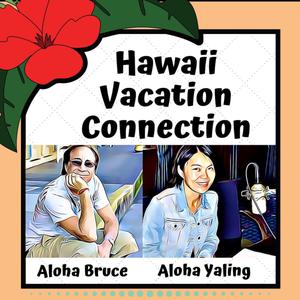Fly Smart: Avoid These Costly Airfare to Hawaii Mistakes
Hawaii has been a popular choice among leisure travelers ever since the advent of jet airlines in the mid-20th century, and it's easy to understand why. However, in the year 2024, Hawaii is poised to stand out as an exceptional destination. Maui, in particular, is diligently working towards the recovery of its tourism industry. This effort involves striking a delicate balance, emphasizing respect for the recovery and rebuilding endeavors in Lahaina while also conveying that the entirety of the island is open for visitors.Lately, we have heard from eager travelers searching for those enticing last-minute Hawaii getaways. But here's the thing, Hawaii doesn't quite follow the same rules as other typical vacation spots. While you might stumble upon seemingly low airfare, it often comes with a set of restrictions and, more often than not, coincides with a period when everything else is priced significantly higher – we're talking about hotel rooms and more.
Airfare to Hawaii Pitfalls
I've noticed that those who plan for a long weekend getaway to our beautiful islands are often taken aback by the sticker shock when they start browsing for hotel accommodations. Hawaii's allure may come at a price that surprises the unprepared traveler.
Other destinations across the Aloha State are facing similar challenges. They are grappling with ensuring that tourism contributes positively to the local economy without negatively impacting the communities where residents live and work. Despite these challenges, it's important to note that tourism remains Hawaii's largest industry, and its position as one of the most coveted destinations in the world remains unshaken.Contrary to common belief, airfare to Hawaii can be unpredictable. Waiting until the last minute to book your flight can result in significantly higher costs. Last-minute fares often double, triple, or even quadruple compared to early bookings. Therefore, it's crucial to plan and book your flights in advance to secure reasonable prices.While many sources advise on the optimal booking window (typically one to three months in advance), this may not apply to Hawaii. Hawaii's airfare and hotel pricing dynamics are different. Booking too far in advance can sometimes be as costly as booking too late. It's essential to strike the right balance and not rush into booking too early. Remember that Hawaii's travel timing differs from other destinations, so relying on general advice may not be suitable. Be mindful of the unique considerations when planning your trip to the Hawaiian Islands.
Airfare to Hawaii Prices
Airfare to Hawaii can vary widely depending on factors such as the departure city, time of booking, airline, class of service, and travel dates. Here are estimated ranges for round-trip airfare from the West Coast, Midwest, and East Coast of the United States to the Hawaiian Islands:
West Coast (e.g., Los Angeles, San Francisco, Seattle) Economy Class: $300 to $700 USD or more Premium Economy: $700 to $1,200 USD or more Business Class: $1,500 to $3,000 USD or more First Class: $2,500 to $5,000 USD or more.
Midwest (e.g., Chicago, Denver) Economy Class: $400 to $800 USD or more Premium Economy: $800 to $1,500 USD or more Business Class: $1,800 to $3,500 USD or more First Class: $2,800 to $5,500 USD or more.East Coast (e.g., New York, Boston, Miami) Economy Class: $500 to $1,000 USD or more. Premium Economy: $1,000 to $1,800 USD or more. Business Class: $2,000 to $4,000 USD or more. First Class: $3,000 to $6,000 USD or more
We're here to help, check out our All-Inclusive Hawaii Packages or get help with airfare, picking hotels or activities. If it's in Hawaii we can make it happen.Get Help With Planning
22 January 2024, 7:44 pm
